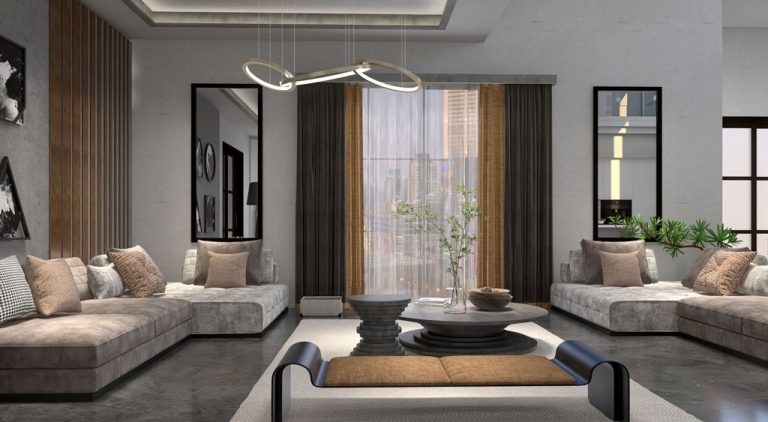Self-contained living units that are becoming increasingly popular as a way to provide a comfortable and safe living space for elderly or disabled family members. Ensuring the safety of the resident is a top priority when designing the floor plan for a Medcottage. Here is a comprehensive guide on how to enhance Medcottage safety.
Install Smoke and Carbon Monoxide Detectors:
Smoke and carbon monoxide detectors are essential for the safety of the resident. They should be installed in key areas, such as the bedroom and living room, and tested regularly. Smoke detectors can detect smoke from fires and carbon monoxide detectors can detect the presence of this dangerous gas, which can be emitted from sources such as gas stoves, furnaces, and water heaters.
Install Non-Slip Flooring:
Installing non-slip flooring in a Medcottage can help prevent falls and reduce the risk of injury, especially for elderly or disabled residents. Here are some steps to follow when installing non-slip flooring in a Medcottage:
– Choose the right type of flooring:
When selecting the flooring for the Medcottage, choose a type that is designed to be slip-resistant, such as vinyl or rubber flooring.
These materials have a textured surface that provides better traction than smooth surfaces like tile or hardwood.
– Prepare the surface:
Before installing the new flooring, make sure that the surface is clean and free of debris. Remove any old flooring and smooth out any
bumps or uneven spots in the subfloor. This will ensure that the new flooring adheres properly and stays in place.
– Apply an adhesive:
Apply an adhesive to the subfloor before laying the new flooring. This will help the flooring stick to the subfloor and prevent it from
shifting or moving around. Make sure to use an adhesive that is compatible with the type of flooring you have chosen.
– Lay the new flooring:
Once the adhesive is applied, lay the new flooring in place. Use a roller or other tool to press the flooring firmly into the adhesive and
ensure that it is evenly distributed. Follow the manufacturer’s instructions for the specific type of flooring you have chosen.
– Cut the flooring to fit:
Use a utility knife or flooring cutter to trim the edges of the flooring to fit the shape of the Medcottage. Be sure to leave a small gap
around the edges to allow for expansion and contraction of the flooring over time.
– Apply a finish:
To protect the new flooring and make it easier to clean, apply a finish such as a sealant or wax. This will also help to make the surface
more slip-resistant and provide an extra layer of protection against scratches and scuffs.
By following these steps, you can install non-slip flooring in your Medcottage to enhance safety and prevent falls.
It is important to consult with a professional if you are not experienced with flooring installation to ensure that the
job is done correctly and safely.
Install Grab Bars:
Installing grab bars in the bathroom and other areas of the Medcottage where the resident may need extra support can help prevent falls and provide stability. These grab bars should be sturdy and able to support the weight of the resident.
Ensure Adequate Lighting:
Good lighting is important for safety, especially for seniors who may have vision problems. Install bright, energy-efficient lighting throughout the Medcottage, including in the bathroom and on outdoor pathways. Motion-activated lights can be particularly helpful in illuminating dark areas.
Include an Emergency Call Button:
An emergency call button can provide peace of mind to both the resident and their family members. This button should be easily accessible and programmed to contact emergency services or a designated caregiver in case of an emergency.
Add a Security System:
A security system can help deter intruders and provide an added layer of safety. Consider installing a video doorbell, motion-activated lights, and a security camera system. These systems can also provide a sense of security to the resident.
Ensure Proper Ventilation:
Proper ventilation is important for maintaining good indoor air quality and reducing the risk of mold and mildew. Install a ventilation system and ensure that the Medcottage is well-ventilated. This can help prevent respiratory issues and other health problems.
Secure the Medcottage:
Ensure that the Medcottage is securely locked and that all windows and doors are properly secured. Consider installing a home security system for added protection. It is also important to ensure that the resident has a way to escape in case of an emergency, such as a fire escape plan.
Incorporate Smart Home Technology:
Smart home technology can enhance Medcottage safety by providing additional monitoring and control. For example, smart thermostats can help regulate temperature and humidity levels, while smart door locks can provide keyless entry and allow for remote monitoring.
Consider the Resident’s Mobility:
Mobility can be a major concern for seniors and individuals with disabilities. When designing the Medcottage floor plan, consider the resident’s mobility and make sure that the layout is easy to navigate. For example, ensure that doorways are wide enough to accommodate a wheelchair and that there are no tripping hazards.
Conclusion:
Enhancing Medcottage safety is crucial for the well-being of the resident. By installing smoke and carbon monoxide detectors, non-slip flooring, grab bars, adequate lighting, an emergency call button, a security system, proper ventilation, smart home technology, and considering the resident’s mobility, you can create a safe and comfortable living space for your loved one. It is important to consult with a professional when designing the Medcottage floor plan to ensure that.




